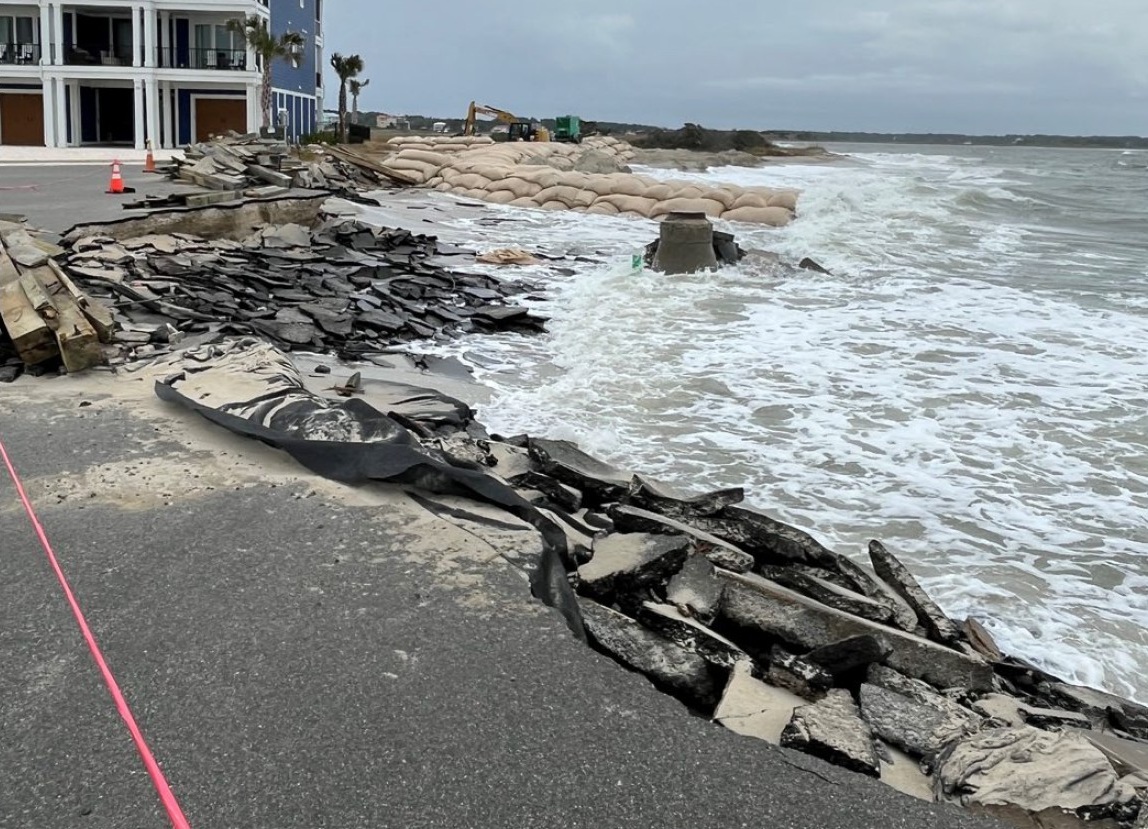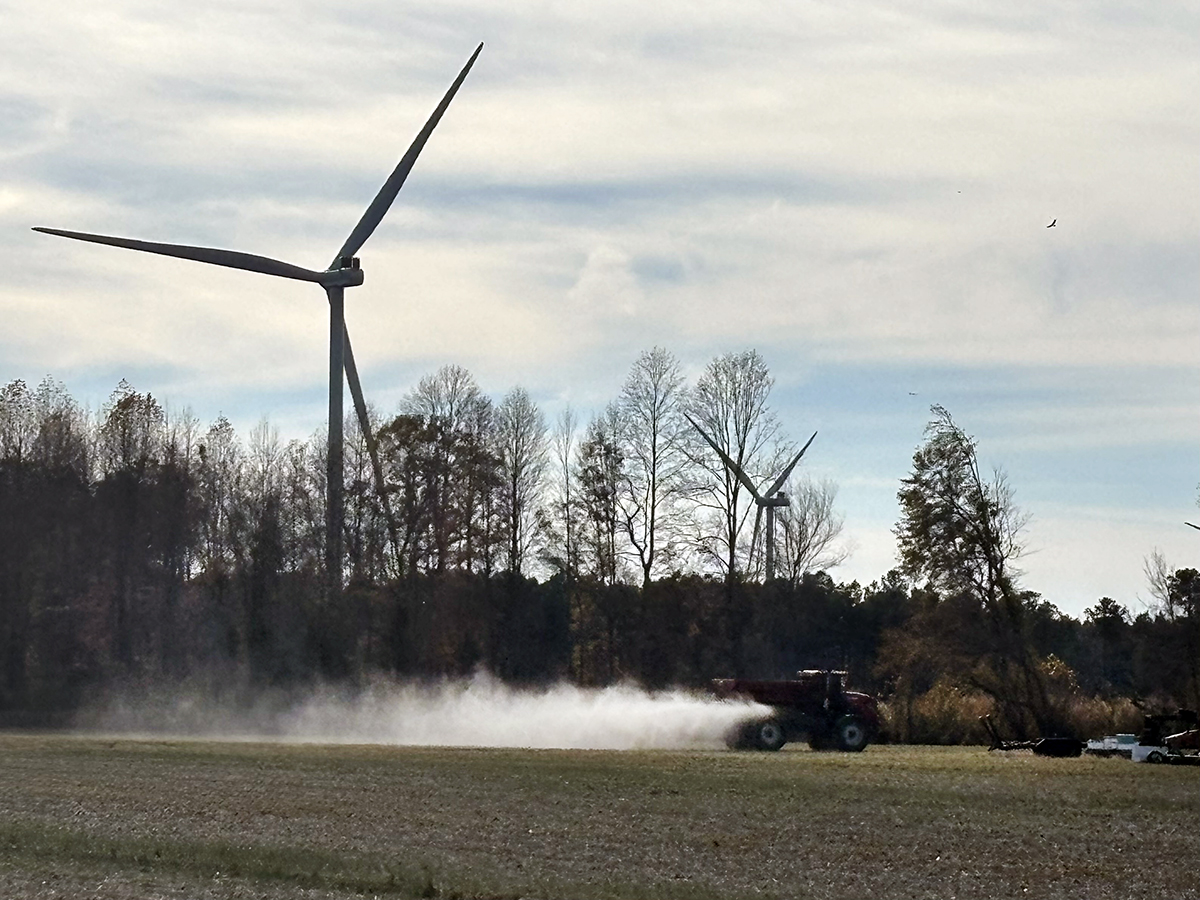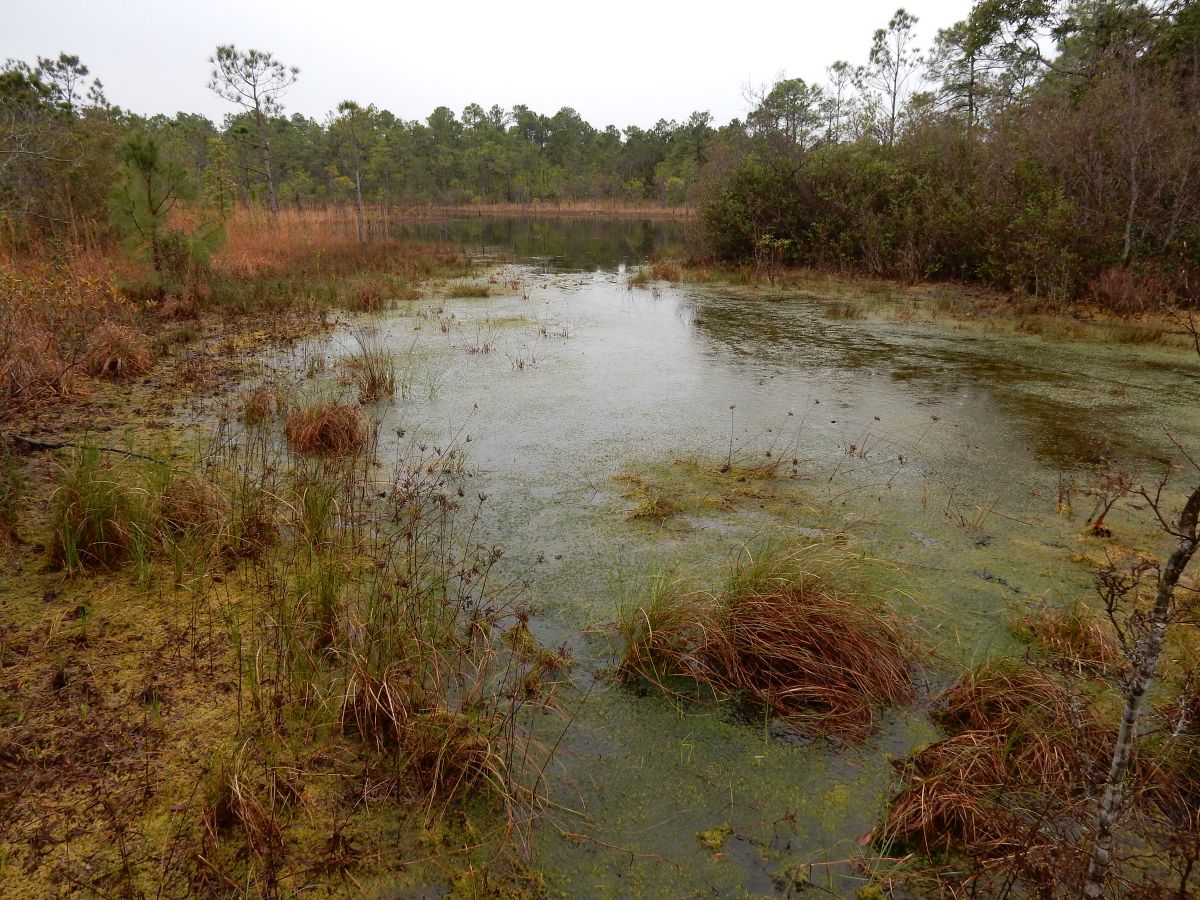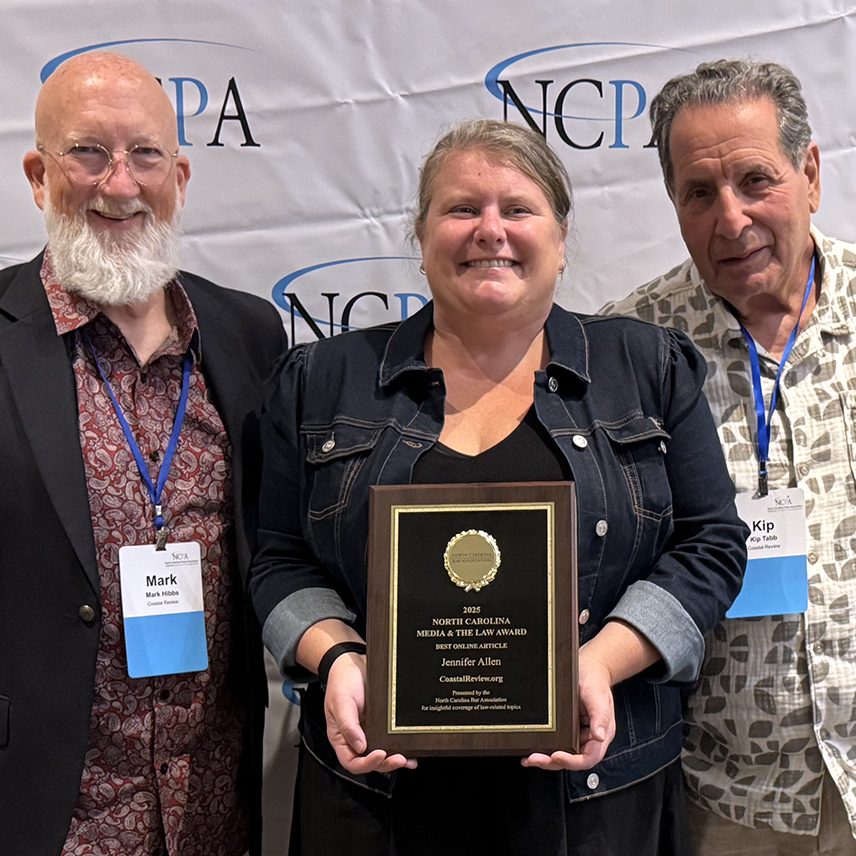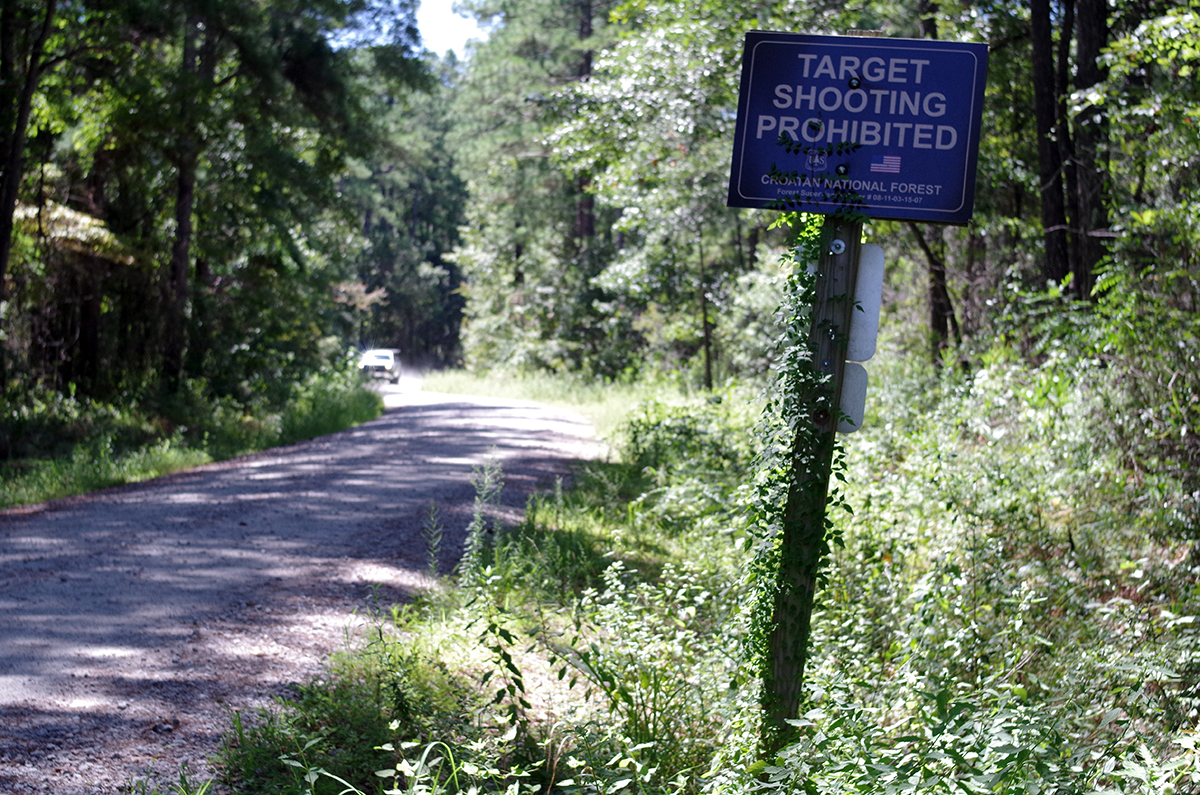
Updated at 11 a.m. Friday, Aug. 29, to include link for public comment.
The Trump administration’s move to repeal a federal rule that prohibits logging within large swaths of U.S. national forests would strip protections for tens of thousands of acres of public lands in North Carolina.
Supporter Spotlight
U.S. Secretary of Agriculture Brooke Rollins announced earlier this summer the department’s intentions to rescind the 2001 Roadless Area Conservation Rule, one the administration calls outdated, saying it restricts the Forest Service from being able to properly manage for fire risk, and that it suppresses the country’s economic development in the forestry sector.
The U.S. Department of Agriculture announced Wednesday that it will publish the notice in the Federal Register on Friday, beginning a public comment period on the potential environmental effects that ends Sept. 19.
“For nearly 25 years, the Roadless Rule has frustrated land managers and served as a barrier to action – prohibiting road construction, which has limited wildfire suppression and active forest management,” Forest Service Chief Tom Schultz said in a release. “The forests we know today are not the same as the forests of 2001. They are dangerously overstocked and increasingly threatened by drought, mortality, insect-borne disease, and wildfire. It’s time to return land management decisions where they belong – with local Forest Service experts who best understand their forests and communities.”
Lifting the rule, commonly referred to as the “Roadless Rule,” would align with President Trump’s initiatives to expand U.S. timber production and boost energy production on federal lands.
In North Carolina alone, more than 170,000 acres of the National Forest System are designated “roadless areas” under the rule.
Supporter Spotlight
Logging, mining, energy development, and road construction are, with a few exceptions, largely prohibited in these areas because they have been identified as possessing at least some of a number of natural features the forest service classifies as “roadless area characteristics.”
Those include attributes such as high-quality or undisturbed soil and water, diverse plant and animal communities, habitat for threatened and endangered species and species dependent on large, undisturbed areas of land, recreation, and traditional cultural properties and sacred sites.
In all, there are more than 58 million acres of inventoried roadless areas in the national forest system, one that includes 154 national forests and 20 national grasslands covering more than 190 million acres in 43 states, the U.S. Virgin Islands, and Puerto Rico.
More than 1.2 million acres of national forestland fall within North Carolina’s borders.
The two largest national forests, Nantahala and Pisgah, make up an overwhelming majority of those lands in the state’s mountain region. Uwharrie National Forest, the smallest in the state, sits in the south-central part of the state.
And then there’s the Croatan National Forest, one the Forest Service refers to as the “only true coastal forest in the East.”
The 160,000-acre forest is bordered on three sides by tidal rivers and Bogue Sound. The land there is peppered with pine forests, saltwater estuaries, bogs, swamps and pocosin.
Within those swamps lies all of the more than 20,000 roadless acres designated in the Croatan, which means those areas are not conducive to road construction, according to Adam Rondeau, public affairs officer for the National Forest Service in North Carolina.
“Whether it’s next month, or 10 years from now, the moment something of value is worth extracting from that forest, roads will be built, pocosin or no,” Erin Carey, state conservation policy director of the North Carolina Chapter of the Sierra Club, said in an email response to Coastal Review. “The only way to ensure the Croatan is protected for future generations is to keep the Roadless Rule in place.”
Environment North Carolina Research & Policy Center Advocate Emily Mason in a statement Wednesday urged that national forests be naturally maintained.
“It is more important to protect these areas than to get a little more wood or to build one more mine or one more road,” she said. “Let’s keep our wild forests wild.”
During a telephone interview last week, Carey said the Croatan is a place of escape for residents who live in the region around it.
“The folks in that region have a very close connection to that forest, at least the ones I’ve worked with, and I think the idea of their forest being cut in two will motivate folks in the area to try and stand up and protect it,” she said.
The Sierra Club has launched a campaign of sorts to inform the public of the administration’s aim and what’s at stake if the rule is rescinded – the fragmentation of natural habitat, the prospect of fewer open, wild areas for people to enjoy, and the harvest of land that is increasingly crucial in combating the effects of global warming.
“Americans love their national forests,” Carey said. “They love their parks. They love these open spaces and they’re very protective of them. That is what’s at risk is the ability for not only us, but for future generations to be able to wander out into the wild and really experience wilderness and experience wildness.”
She also argues that national forests offer a line of defense against floods.
“In the coastal plain, we’re experiencing a lot of flooding and we’ve developed so much land that the water can’t sink in, and the water does sink in (in) forests,” Carey said. “Trees hold water. Trees hold carbon. So, the idea that we can go into these forests and cut roads and cut down trees is just, it’s horrifying for me on a personal level, but also it just doesn’t make any sense from a public safety standpoint, from an economic standpoint, from a habitat-preservation standpoint.”
In her June announcement, Rollins argued that revoking the rule will open “a new era of consistency and sustainability for our nation’s forests.”
Nearly 30 million acres of inventoried roadless areas in the forest service system are in areas at high or very high risk of wildlife, according to the USDA.
“Rescinding this rule will allow this land to be managed at the local forest level, with more flexibility to take swift action to reduce wildfire risk and help protect surrounding communities and infrastructure,” according to an agency release.
But some question how the Forest Service, which already faces a lengthy backlog in maintaining existing roads within the forest system, will be able to adequately manage additional roads.
Limited resources, aging infrastructure and increased public use have delayed the Forest Service in regularly maintaining its roads, bridges, buildings and dams. The agency faces an estimated $8.6 billion in deferred maintenance costs.
Critics of the plan to erase the rule also point out that more roads could lead to more fires.
Nearly 85% of wildland fires in the U.S. are caused by humans, according to the Forest Service.
“Easier access to these places is not going to prevent fires,” Carey said. “It’s probably going to make it worse. In fact, fires are 90% more likely to be started within a half-mile of a road, so we probably should not be punching roads into places where we don’t want fire.”
Sooner than two months after announcing plans to rescind the Roadless Rule, Rollins issued a memorandum directing the Forest Service to prioritize energy projects on national forestlands based on output per acre.
“America has the resources and ingenuity to power our future without depending on foreign adversaries,” Rollins said in an Aug. 21 statement. “Under this memorandum, we are putting America First, ensuring that every acre of federally managed land is used wisely, balancing the needs for energy security with our responsibility to safeguard natural resources. We will no longer allow foreign-made solar panels or inefficient energy projects to undermine our national security.”
Environmental groups argue that paving the way for oil and gas production on national forestlands would unnecessarily put rich, biologically diverse forest areas at risk and create the potential for pollution and oil spills.



